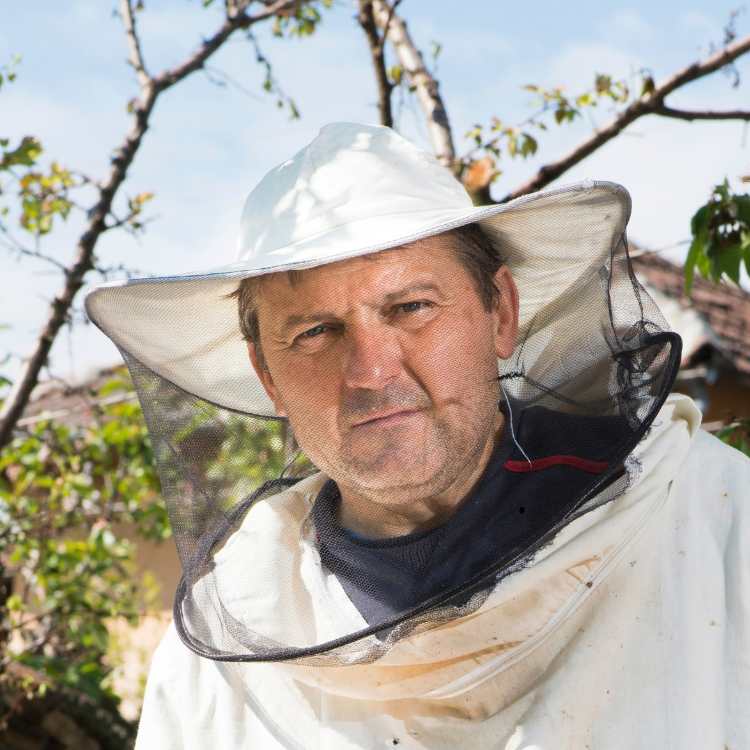When looking at the world of bees, it is quite fascinating to see all the minute details about it, and one of the most intriguing ones is the reproductive role of the queen bee. So, it is no wonder, even the experts ask: How many eggs does a queen bee lay per day? And although the question does seem straightforward, the answer is far from simple. There are multiple factors that could be influencing this answer. From the queen’s age to the needs of the colony, let’s dive deeper into this topic to take a deeper look into the extraordinary life of a queen bee.
The role of the queen bee in a colony
Think of the queen bee as the heart of the colony. She is the sole egg layer, responsible for maintaining the hive’s population. A strong and healthy bee is able to sustain a thriving colony of thousands of worker bees. But unlike worker bees that live for just a few weeks, a queen can live for several years and lay eggs to sustain the colony’s numbers.
How many eggs does the queen bee lay per day?
When conditions are optimal, a queen bee is capable of laying somewhere in the range of 1,000 to 2,000 eggs per day. However, recent studies reveal that the most prolific queens are able to lay up to 3,000 eggs per day during peak mating seasons. We talked about some major factors affecting the number of queen bee eggs per day. Major ones include
- Age of the queen: Younger queens are able to lay more eggs when compared to the older ones. So, you can say that as a queen ages, her capacity to lay eggs declines.
- Colony needs: The worker bees of the colony regulate the queen’s egg-laying by preparing cells and ensuring enough food is available.
- Season: Spring and summer are the most productive seasons while egg production generally slows down by late summer and fall.
- Hive space: A queen needs ample space in the hive to lay her eggs. In case the hive is overcrowded, egg production decreases.
- Genetics: Some queen bee strains are naturally more prolific than others.

How does the queen lay so many eggs?
The process of egg-laying is highly efficient. The queen bee moves across the comb to carefully examine each cell before she decides to deposit an egg inside it. This entire process takes only a few seconds per egg, thus allowing the queen to lay thousands in a single day.
The worker bees, too, play a critical role in this entire process. They guide the queen to the prepared cells and ensure that she has everything that she needs to continue laying her eggs. Once the queen deposits an egg, it remains attached to the cell by a mucous strand. It takes about three whole days for the eggs to hatch into larvae, thus entering their journey into adult bees.
The lifespan and lifetime egg production of a queen bee.
You will be astonished to learn about the queen bee’s reproductive potential. In her lifespan, she can lay up to 1 million eggs. Yes, you heard that right. This staggering number can vary across her lifespan and overall health. A typical queen bee lives for about two to five years, but with most commercial operations, beekeepers replace the hive queens every one or two years to be able to sustain peak egg production.
This immense reproductive potential is supported by the queen’s early life mating flight, where she is able to store millions of sperm from multiple drones, allowing her to fertilize her eggs without the need to mate again.
Comparison of egg laying rates among bee species
Although queen honeybees are known for their exceptional egg laying capacity, looking at different species, their reproductive capacities vary.
- European honeybee: The queen lays up to 2,000 to 3,000 eggs per day under peak conditions.
- Asian honeybee: Lays fewer eggs, typically around 1,000 eggs per day.
- Bumblebee: The queens are known to lay significantly fewer eggs, often in the range of only a few hundred per day.
- Solitary bees: Do not have the same large scale reproductive system, laying just a handful of eggs in their lifetime.
Final thoughts
Wrapping up, the queen bee eggs per day metric serves as a key indicator of colony health to help beekeepers and researchers monitor hive productivity and longevity. This question is crucial to understand if you are looking to understand the dynamics of a thriving community. While the average rate falls between 1,000 and 2,000 eggs per day, in certain cases, this number can push even higher.
The incredible reproductive abilities of the queen bee are a stark highlight of the complexity and efficiency of the colony. And if you are curious about nature, appreciating the role of the queen offers deeper insight into one of the world’s most remarkable species.





